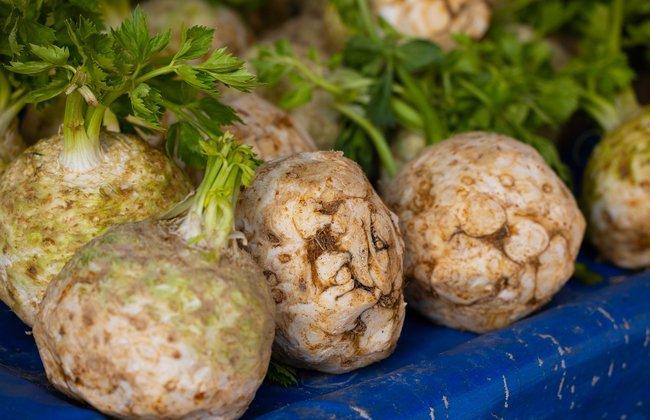Allergen Research – Link Potentially Identified between Celery and Mugwort Pollen Allergies
An international research team headed up by the Paul-Ehrlich-Institut has identified a previously unknown allergen in celery root. The protein, a defensin named Api g 7, could be the hitherto unexplained link between a celeriac allergy and sensitisation to mugwort pollen. It could also contribute to improved diagnosis of this type of food allergy. A report on the findings appears in the online edition of Allergy from 15 December 2021.
 Source: Engin Ekyurt/Pixabay.com
Source: Engin Ekyurt/Pixabay.com
With a prevalence of up to 0.45% of the adult population, an allergy to celery root (Apium graveolens) is one of the most common food allergies in northern Europe. It typically produces local oral symptoms, such as itchiness and swelling of the mouth and throat, but severe reactions (e.g., life-threatening anaphylactic shock) are also possible. Seven percent of those in Europe who are known to suffer from anaphylactic reactions experience anaphylaxis in response to celery root.
Six celery allergens (Api g 1 through Api g 6) were previously known. These allergens are a very diverse set of proteins, such as defence proteins or profilin, a small protein with regulatory properties.
A celeriac allergy often comes hand in hand with a respiratory allergy to mugwort pollen (Artemisia vulgaris), which up until now could not be explained by the presence of a cross-allergy to known homologous allergens in celery root pollen. A cross-allergy - also known as IgE cross-reactivity - is considered present when immunoglobulin E antibodies (IgE), which react to a specific allergen from a single source, also recognize allergens from another sources and cause allergic reactions.
A team of researchers at the Paul-Ehrlich-Institut, led by Dr Andrea Wangorsch and managed by the Vice President of the Paul-Ehrlich-Institut, Professor Stefan Vieths, worked together with colleagues from Austria, Switzerland, and Sweden on the study. They researched the possible presence of a defensin-related allergen in celeriac allergies and what role that allergen might play. Defensins are small polypeptides, which are present in all animal organisms and higher forms of plant life and defend against microbial pathogens. Defensin cDNA from celery root was cloned and a recombinant Api g defensin produced in order to carry out the experiment. In parallel to this, mass spectrometric analysis showed the presence of a equivalent, defensin-like protein in celery root extract and confirmed its amino acid sequence.
The researchers tested the binding capacity and allergenicity of celery root defensin, called Api g 7, using serum samples from eight celery root allergy sufferers and appropriate control subjects. Six of those with a celery root allergy underwent a double-blind, placebo-controlled food challenge (DBPCFC). They developed symptoms that ranged from mild subjective reactions to severe objective symptoms, such as a sudden drop in blood pressure and loss of consciousness. All celery root allergy sufferers were sensitised to rApi g 7.
Further tests done by the research team included an analysis of the allergen activity of the recombinant Api g 7. During those tests, it was discovered that celery root with Api g 7 contained an IgE-reactive defensin, which demonstrated cross-reactivity with the main allergen in mugwort pollen. The presence of this defensin could most likely explain the known association between celery root allergy and mugwort pollen sensitisation.
Professor Vieths states: "The discovery of the molecular link between celery and mugwort pollen allergies will also be relevant for diagnostics. The newly identified Api g 7 allergen will lead to improved sensitivity of in-vitro tests."
Further studies with larger patient cohorts will show if there is a connection between Api g 7 and severe reactions to celeriac.
Original Publication
Wangorsch A, Lidholm J, Mattsson LA, Larsson H, Reuter A, Gubesch M, Gadermaier G, Bures P, Scheurer S, Ballmer-Weber B, Vieths S (2022): Identification of a defensin as novel allergen in celery root: Api g 7 as a missing link in the diagnosis of celery allergy?.
Allergy 77: 1294-1296.
Online-Abstract
top



